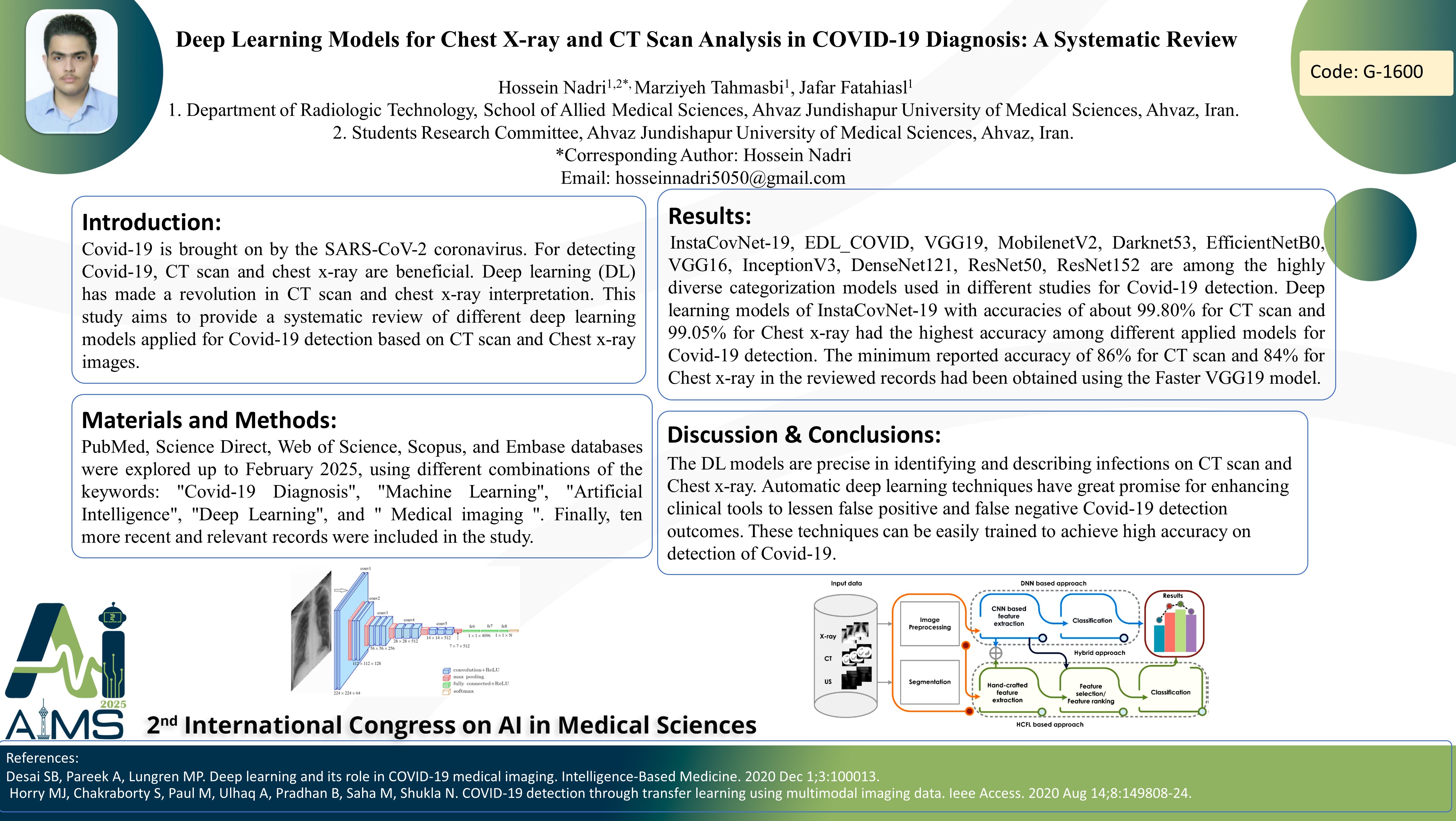مدلهای یادگیری عمیق برای تحلیل تصاویر رادیوگرافی قفسه سینه و سیتیاسکن در تشخیص کووید-۱۹: یک مرور سیستماتیک
کد: G-1600
نویسندگان: Hossein Nadri * ℗, Marziyeh Tahmasbi, Jafar Fatahiasl
زمان بندی: زمان بندی نشده!
برچسب: پردازش تصاویر پزشکی
دانلود: دانلود پوستر
خلاصه مقاله:
خلاصه مقاله
Background and aims: COVID-19, caused by the SARS-CoV-2 coronavirus, presented significant diagnostic challenges during the peak of the pandemic, requiring rapid and accurate detection to manage the outbreak effectively. Chest X-ray (CXR) and Computed Tomography (CT) scans were widely used for identifying COVID-19-related pulmonary abnormalities. However, the manual interpretation of these images by radiologists was time-consuming, subject to variability, and contributed to an increased workload, especially during high infection surges. The emergence of deep learning (DL) revolutionized medical imaging analysis, offering automated solutions to enhance diagnostic accuracy and efficiency. This study aims to provide a systematic review of various DL models applied for COVID-19 detection using CXR and CT images, assessing their performance, advantages, and potential implications for future infectious disease outbreaks. Method: PubMed, Science Direct, Web of Science, Scopus, and Embase databases were explored up to February 2025, using different combinations of the keywords: "Covid-19 Diagnosis", "Machine Learning", "Artificial Intelligence", "Deep Learning", "Computed Tomography (CT)", "Chest X-Ray" and "Medical imaging". Finally, ten more recent and relevant records were included in the study. Results: InstaCovNet-19, EDL_COVID, VGG19, MobilenetV2, Darknet53, EfficientNetB0, VGG16, InceptionV3, DenseNet121, ResNet50, ResNet152 are among the highly diverse categorization models used in different studies for Covid-19 detection. Deep learning models of InstaCovNet-19 with accuracies of about 99.80% for CT scan and 99.05% for Chest x-ray had the highest accuracy among different applied models for Covid-19 detection. The minimum reported accuracy of 86% for CT scan and 84% for Chest x-ray in the reviewed records had been obtained using the Faster VGG19 model. Conclusion: DL models have demonstrated high accuracy in detecting COVID-19 from CT and CXR images, reducing diagnostic variability and workload. Automated DL techniques enhance clinical tools by minimizing false positives and false negatives, offering a scalable solution for future infectious disease detection.
کلمات کلیدی
Covid-19, Deep Learning, X-ray imaging,Computed Tomography(CT)
